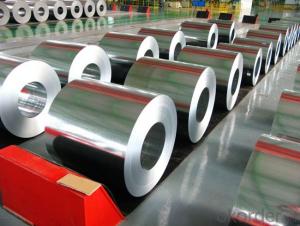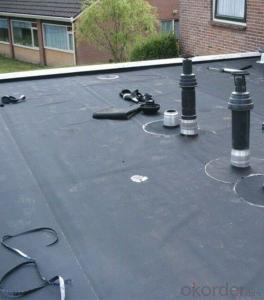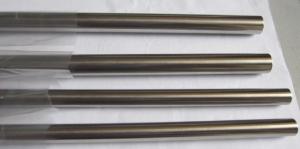Chimney Liner Stainless Steel
Chimney Liner Stainless Steel Related Searches
Best Paint For Stainless Steel Blanket Insulation For Steel Buildings Primer For Galvanized Steel Foam Filter For Stainless Steel H S Code For Stainless Steel Surface Grinding Wheels For Stainless Steel Surface Grinding Wheels For Hardened Steel Hole Saw For Stainless Steel Paint For Stainless Steel Stainless Steel For BbqHot Searches
Steel Mesh Panels For Sale Price For Stainless Steel Scrap Scrap Price For Stainless Steel Price For Stainless Steel Stainless Steel Tank For Sale Stainless Steel Sheets For Sale Cheap High Tea Sets For Sale Stainless Steel Tanks For Sale Stainless Steel For Sale High Density Fiberboard For Sale Solar Hot Water Collectors For Sale Scaffolding For Sale In Uae Scaffolding For Sale In Ireland Scaffolding For Sale In Houston Type Of Inverter For Solar Price Of Shipping Containers For Sale Types Of Inverter For Solar Stock Price For Aluminum Used Solar Inverter For Sale Steel Mesh Panels For SaleChimney Liner Stainless Steel Supplier & Manufacturer from China
Okorder.com is a professional Chimney Liner Stainless Steel supplier & manufacturer, offers integrated one-stop services including real-time quoting and online cargo tracking. We are funded by CNBM Group, a Fortune 500 enterprise and the largest Chimney Liner Stainless Steel firm in China.Hot Products
FAQ
- Yes, stainless steel pipes can be used for outdoor handrails. Stainless steel is a popular choice for outdoor applications due to its durability, corrosion resistance, and aesthetic appeal. It is able to withstand harsh weather conditions, such as rain, snow, and UV exposure, without rusting or deteriorating. Stainless steel handrails also require minimal maintenance and can handle heavy usage. Therefore, they are a reliable and long-lasting option for outdoor handrails, providing safety and adding a modern touch to any space.
- Joining stainless steel pipes to other materials can be achieved through several methods, depending on the specific application and requirements. Here are a few common techniques used: 1. Welding: Welding is the most common and effective method for joining stainless steel pipes to other materials. Different types of welding processes such as TIG (Tungsten Inert Gas) welding, MIG (Metal Inert Gas) welding, or stick welding can be used, depending on the material being joined and the desired strength of the joint. Welding provides a strong and durable bond between stainless steel pipes and other materials. 2. Flanges: Flanges are commonly used to join stainless steel pipes to other materials in applications that require easy disassembly or connection to different equipment. Flanges are typically made from materials such as carbon steel, cast iron, or even stainless steel itself. The flanges are bolted together, creating a secure joint that can be easily disconnected when needed. 3. Threaded connections: Stainless steel pipes can also be joined to other materials using threaded connections. This method is often used for smaller diameter pipes or when the pipes need to be easily removed or replaced. The threaded connections can be made using pipe fittings such as couplings, unions, or adapters, which have male and female threads that screw together to form a tight seal. 4. Compression fittings: Compression fittings are another option for joining stainless steel pipes to other materials. These fittings consist of a compression nut, a ferrule, and a body that houses the ferrule. The ferrule is compressed onto the pipe, creating a tight seal when the compression nut is tightened. Compression fittings provide a reliable and leak-free joint between stainless steel pipes and other materials. 5. Mechanical connectors: In some cases, mechanical connectors can be used to join stainless steel pipes to other materials. These connectors typically involve clamping or fastening mechanisms that secure the pipes together without the need for welding or threading. Mechanical connectors can be a suitable option in situations where disassembly and reassembly are required. It is important to consider the specific application, material compatibility, and the required strength and durability of the joint when selecting the appropriate method to join stainless steel pipes to other materials. Consulting with a professional or referring to industry standards and guidelines is recommended to ensure a proper and reliable connection.
- The main difference between seamless and submerged arc welded stainless steel pipes lies in the manufacturing process. Seamless stainless steel pipes are produced without any welding seam, resulting in a smoother and more uniform surface. On the other hand, submerged arc welded stainless steel pipes are created by welding strips of stainless steel using an electric arc submerged in a flux. This process may leave a visible welding seam on the surface. Overall, seamless pipes offer better corrosion resistance and higher strength, while submerged arc welded pipes are typically more cost-effective and suitable for applications with lower pressure requirements.
- Stainless steel pipe welding interface leakage, how can we not leak?
- Protection gas flow, current and voltage should be chosen according to process;
- Yes, stainless steel pipes are highly suitable for marine environments. They have excellent corrosion resistance properties, which make them resistant to the harsh conditions found in marine settings such as saltwater, high humidity, and exposure to various chemicals. Stainless steel pipes are durable, long-lasting, and can withstand the corrosive effects of seawater, making them an ideal choice for marine applications.
- What is sanitary stainless steel pipe?
- Passivation layer: after polishing, it is necessary to immerse the steel pipe in the passivation bath, and then use the acid passivation liquid to oxidize the surface of the steel pipe to form a passivation layer, so as to achieve the anti-corrosion effect of the steel pipe
- Yes, stainless steel pipes are suitable for architectural applications. Stainless steel is a highly durable and corrosion-resistant material that can withstand harsh environmental conditions, making it ideal for architectural projects. It is commonly used in structural applications such as handrails, guardrails, and balustrades due to its strength and aesthetic appeal. Stainless steel pipes are also favored for their versatility, as they can be easily shaped and welded to create unique designs and structures. Additionally, stainless steel pipes offer low maintenance requirements and can be polished to a high shine, enhancing the overall aesthetics of architectural projects. Overall, stainless steel pipes are an excellent choice for architectural applications due to their durability, corrosion resistance, versatility, and aesthetic appeal.















































